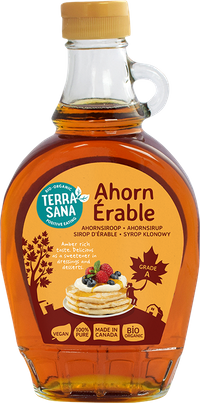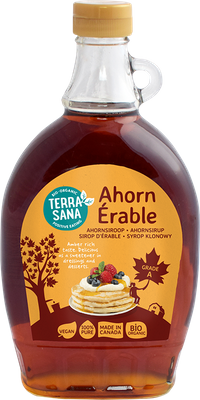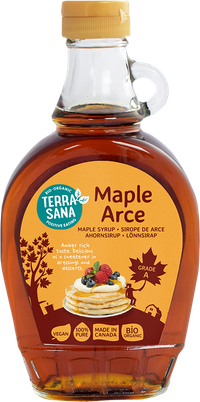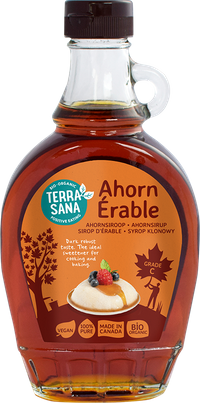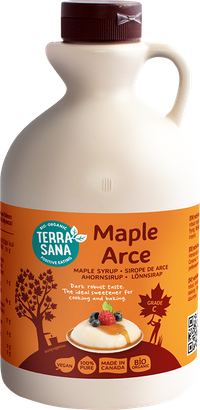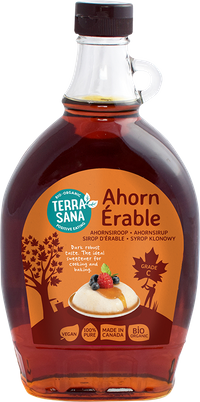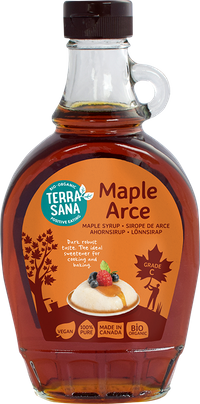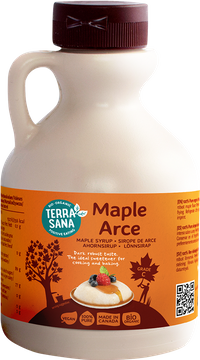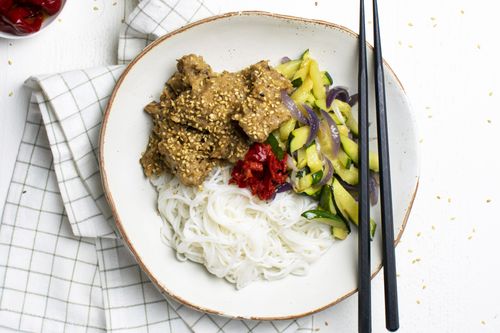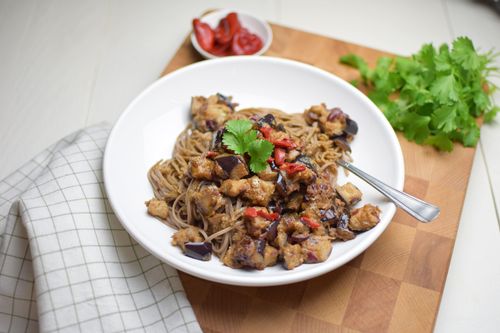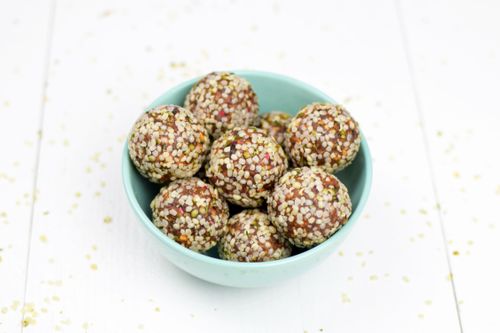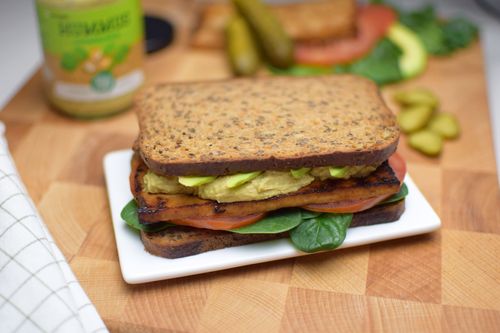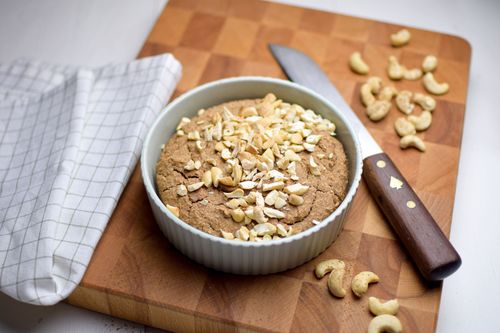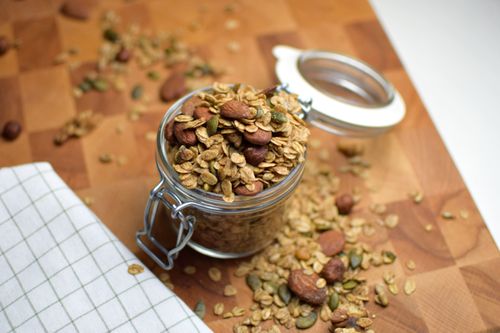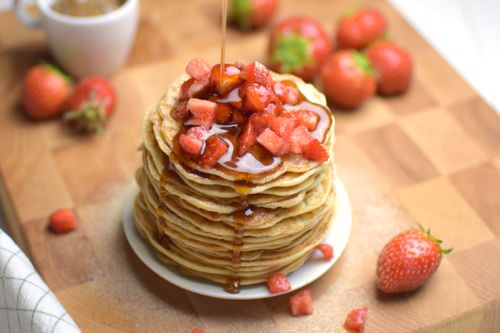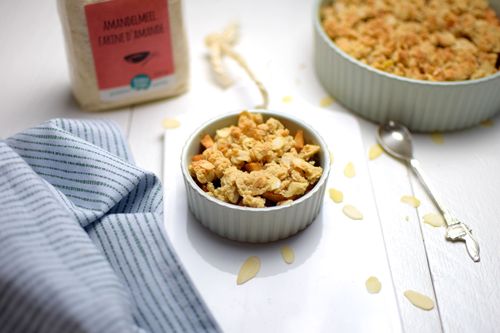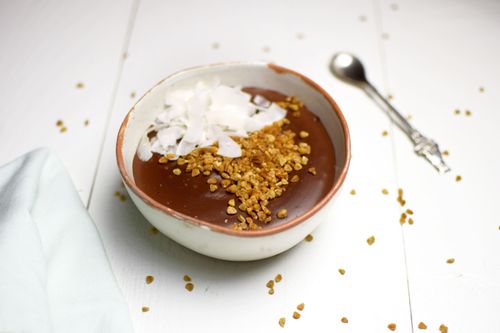Maple syrup
What is maple syrup?
Maple syrup is a natural sweetener made from the sap of maple trees. It’s famously known as pancake syrup, but it’s so much more! Consider it a sweetener, sugar substitute, or a wonderful alternative to agave syrup or honey.
How is maple syrup made?
Our organic maple syrup is produced in Canada with minimal intervention, as the tree does most of the work itself. During the summer, the maple tree produces sugar, which it stores as starch in its roots. When spring comes, the maple converts this starch into a sugary sap. In March and April (sugar season), we tap the tree to collect the sap, which we then boil down to create this delightful syrup, which in Canada is often referred to as liquid gold!
What are the benefits of maple syrup?
- Vegan replacement for honey.
- 100% natural: no artificial flavors, colors, or additives.
- 100% pure: made from just one ingredient – condensed maple sap.
- The tree (and its sap) renew themselves every year – the power of nature!
- Contains polyphenols: antioxidants naturally found in fruits, vegetables, whole grains, and coffee.
- Widely used in the popular master cleanse or maple detox.
Glycemic Index
When you eat, your blood sugar levels rise. When you consume sugar, your blood sugar levels rise even faster. How fast it rises depends on the type of sugar. Maple syrup has a relatively low glycemic index, meaning it raises blood sugar levels a little less quickly than regular sugars.

What’s the difference between maple syrup grade A and grade C?
Grade A (also called amber rich taste)
Maple syrup grade A has a pure, fairly neutral flavor, making it perfect as a sweetener for dressings and desserts. Grade A is light brown in color because it is typically tapped at the beginning of the “sugar season,” the time of year when maple trees produce sap. During “sugar season,” usually in March and April, the temperatures start to warm up after the winter cold. The days become warmer, while the nights remain cold, creating the perfect conditions for the maple trees to produce sap. During warmer days, the maple trees draw nutrients from the ground and send sap to their branches. At night, as temperatures drop, the sap returns to the tree’s roots.
Grade C (also called dark robust taste)
Maple syrup grade C has a stronger, more robust maple flavor with a hint of caramel notes. This grade is often used for cooking and baking. Grade C is delicious over fruit, pancakes, and in sauces. The syrup is dark brown in color because it is usually tapped later in the “sugar season.” As “sugar season” progresses, usually toward the end of the season, natural changes occur in the sap of the maple trees. The sap contains more natural minerals and compounds, contributing to the darker and more intense flavor of Grade C maple syrup.
Maple syrup replacement
If you want to replace sugar with maple syrup, keep in mind that maple syrup may make your baked goods slightly wetter than sugar. It has a different composition and moisture content, so it can affect the texture of your recipe. Here are some guidelines for substituting sugar with maple syrup:
- Honey: Replace 100 ml of honey with 100 ml of maple syrup.
Agave syrup: Replace 100 ml of agave syrup with 100 ml of maple syrup.
Granulated sugar: Replace 100 g of granulated sugar with 65 g of maple syrup.
Brown sugar: Replace 100 g of brown sugar with 65 g of maple syrup.
Vegan recipes with maple syrup
Maple syrup is an excellent sugar substitute and tastes delicious in (no-bake) sweet batters for cookies, granola, ice cream, or cake. Download our recipe booklet for delightful plant-based recipes with maple syrup, or explore our recipe page for maple syrup-based recipes.
